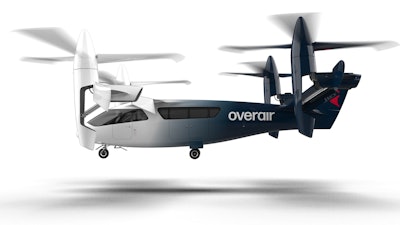
Electric vertical takeoff and landing vehicle (eVTOL) company Overair announced its most recent funding of $145 million from Hanwha Systems and Hanwha Aerospace, providers of communications and aircraft technologies. With this new investment, Overair remains on track to fly its all-electric experimental prototype in the second half of 2023.
Hanwha's continued investment in Overair not only funds the ongoing development of Butterfly but will also allow Overair to lay the groundwork for commercializing its mobility technology. In addition to its investment, Hanwha will also provide electric motors and battery packs for Overair's prototypes, as the two companies expand their R&D co-operation.
"This is a tremendous milestone for our growing team, and we're extremely well positioned to deliver sustainable aerial ridesharing to the world through the development of Butterfly," said Ben Tigner, co-founder and CEO of Overair. "We're exactly where we want to be, building a superior aircraft company with class leading mobility technology around an unrivaled aircraft while rapidly approaching the first flight of a purpose-built prototype next year. We've proven Butterfly's propulsion system, so we'll now begin validating Butterfly's ability to operate safely in real-world weather conditions, carry significant payloads, and fly incredibly quietly."
Butterfly is an all-electric aircraft with six seats designed to take off and land vertically. Butterfly's propulsion is efficient and will give Butterfly a broad flight envelope and small sound footprint . Specifically, Butterfly's Optimum Speed Propulsion (OSP) uses four large propellers, which spin slowly when hovering and even slower when cruising, and draw only a fraction of the available motor power, giving Butterfly extra payload capacity and power margins to operate safely in challenging environmental conditions. Additionally, the slow-turning props produce little sound, which will allow Butterfly to operate in high-density areas with noise sensitive communities.
As the company continues to work toward FAA certification, Overair is also working with NASA and Urban Movement Labs in Los Angeles to develop urban air mobility (UAM) routing and infrastructure.






















